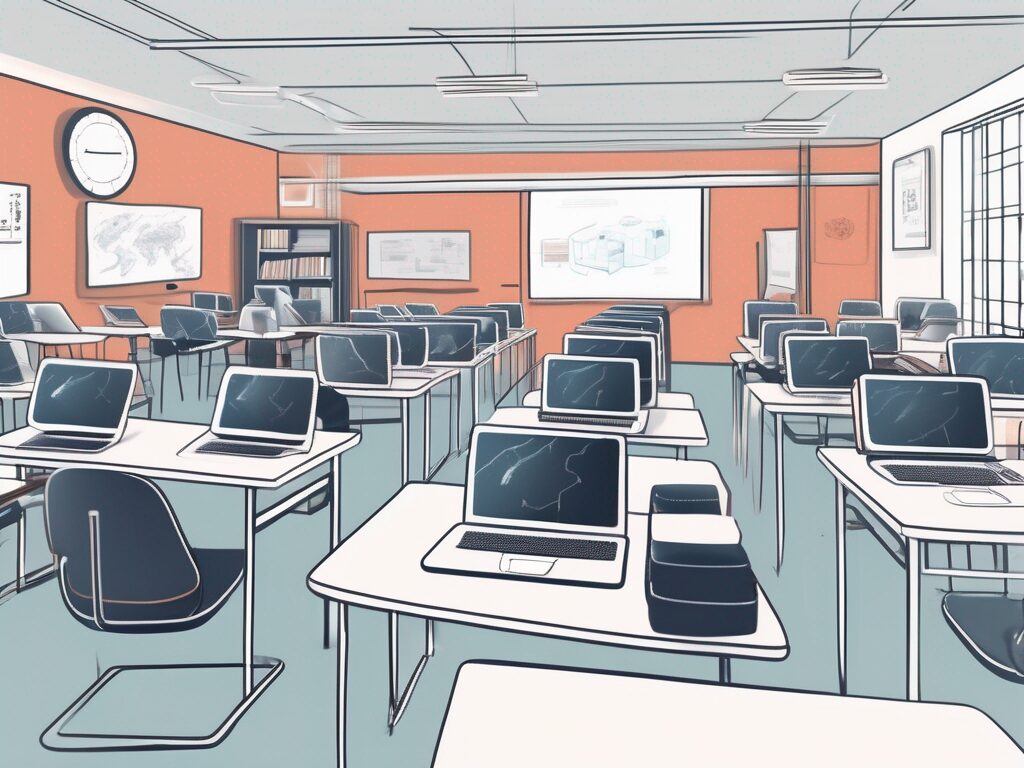In the modern world, technology has become an integral part of our lives, and the education sector is no exception. The integration of technology in classrooms has revolutionised the way we teach and learn, particularly in China, where the International Postgraduate Certificate in Education (IPGCE) is gaining momentum. This article will delve into four innovative methods of incorporating technology in China classrooms with an IPGCE, drawing comparisons with similar practices worldwide.
1. Interactive Whiteboards
Interactive whiteboards (IWBs) are a staple in many classrooms globally, and China is no different. These high-tech boards offer a dynamic platform for teachers and students to interact with digital content in a way that traditional chalkboards simply can’t match.
With an IWB, teachers can present multimedia content, such as videos, images, and interactive quizzes, to make lessons more engaging. For instance, during a geography lesson, a teacher can use Google Earth to take students on a virtual tour around the world, a feat that would be impossible with a traditional chalkboard.
Moreover, IWBs can be integrated with other technologies, such as tablets and smartphones, allowing students to interact with the content on the board directly from their devices. This level of interactivity can significantly enhance student engagement and participation, leading to improved learning outcomes.
2. Learning Management Systems
Learning Management Systems (LMS) are another technological innovation that has made its way into China classrooms. These platforms provide a centralised online space where teachers can manage course content, assignments, and assessments, and students can access learning materials and submit their work.
An LMS, such as Moodle or Blackboard, can be a game-changer in a classroom setting. It allows for a more organised and streamlined approach to teaching and learning, reducing the need for physical paperwork and making it easier for teachers to track student progress.
Furthermore, an LMS can facilitate blended learning, a teaching approach that combines face-to-face instruction with online learning. This method can be particularly effective in promoting self-paced learning and catering to individual learning styles, making it a popular choice in IPGCE classrooms.
3. Virtual Reality
Virtual Reality (VR) is a relatively new technology in the education sector, but its potential is immense. With VR, students can immerse themselves in a three-dimensional environment, providing a unique and engaging learning experience.
For example, in a history lesson, students can use VR to virtually visit historical sites and events, providing a deeper understanding and appreciation of the subject matter. Similarly, in a science lesson, students can explore the human body or the solar system in a way that textbooks simply can’t provide.
While the use of VR in classrooms is still in its early stages, its potential for enhancing learning experiences is undeniable. As VR technology continues to evolve and become more accessible, it’s likely to become a common feature in China classrooms with an IPGCE.
4. Artificial Intelligence
Artificial Intelligence (AI) is another emerging technology that’s making its way into classrooms. AI can be used in a variety of ways in an educational setting, from personalised learning to automated grading.
AI-powered platforms can adapt to individual students’ learning styles and pace, providing personalised content and feedback. This can help students to better understand and retain information, leading to improved learning outcomes.
Moreover, AI can automate routine tasks, such as grading and attendance tracking, freeing up teachers’ time to focus on more important aspects of teaching. While the use of AI in classrooms is still in its infancy, its potential for transforming education is immense.
In conclusion, technology is playing an increasingly important role in China classrooms with an IPGCE. From interactive whiteboards and Learning Management Systems to Virtual Reality and Artificial Intelligence, these technologies are transforming the way we teach and learn, making education more engaging, interactive, and personalised. As technology continues to evolve, it’s exciting to imagine what the future of education might look like.
Empower Your Teaching Career with Technology and IPGCE
As you embrace the technological advancements in education, consider the IPGCE to further enhance your credentials and career prospects. Join a community of educators who have seen a 50% increase in interview callbacks and a 45% boost in promotion rates. With the IPGCE, you’ll gain invaluable insights into global education systems, connect with a global network of professionals, and enjoy the flexibility of balancing your professional development with your current commitments. Don’t let inadequate qualifications or isolation limit your potential. Join the UK’s #1 Teacher Training Course today and transform your career with the power of technology and a world-class education.

